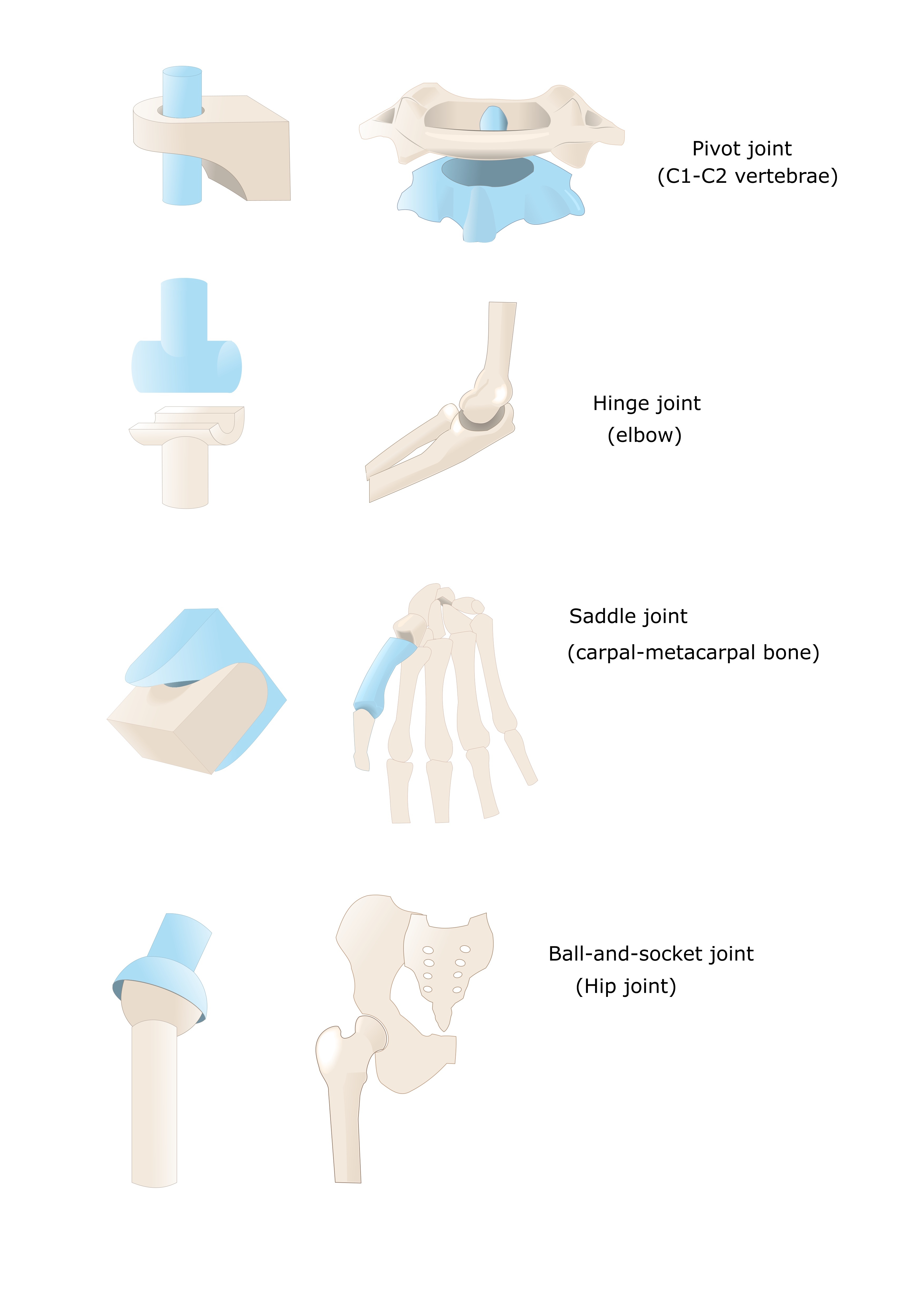Joints are necessary for proper mobility. Joint bones (combined with muscles, ligaments and tendons) work alongside one another to provide specific ranges of motion for limbs or other major portions of the body. The bones also have unique shapes that complement one another, providing optimal protection and support. In this article, the major joints of the body, known as synovial joints (freely moving), and their different categories are explained. Synovia is the white lubricating fluid secreted inside these joints to keep them operating smoothly.
Types
There are six different types of synovial joints: gliding, hinged, pivot, condyloid, saddle, and ball and socket. They are the most common forms of joint in the body. All are free moving, have a wide range of motion and are surrounded by a substance known as synovial fluid.
Gliding
Gliding joints have the most simplistic range of motion of all synovial joints. They function to allow side-to-side and back-and-forth motions. An example of a gliding joint would be the vertebrae, which allow the spine to bend or lean to the side. Bones adjoining with gliding joints are typically flat but may have a slightly curved, concave, or convex appearance.
Hinged
Hinged joints permit a back-and-forth motion, allowing parts of the body to extend and flex. With this particular joint, one bone must be concave and the other convex to allow the most extensive range of motion. An example of a hinged joint would be the knee. The knee joint permits the shin and foot to swing inward and outward, allowing the motions used in running, walking, and swimming.
Pivot
A pivot joint is limited to circular motions. Its joint is composed of a depressed bone and another cone-shaped bone that provide the ability to twist or rotate. Examples include the radius and ulna (primary bones in the forearm). These allow the forearm to turn, providing the motions necessary for pronation and supination.
Condyloid
Like gliding joints, condyloid joints provide a similar side-to-side and up-and-down motion. Condyloid joints contain one concave bone and another oval-shaped bone. They are also known as biaxial joints, which means they maintain two separate axes (left to right, up and down). An example of a condyloid joint would be the radiocarpal joint of the wrist.
